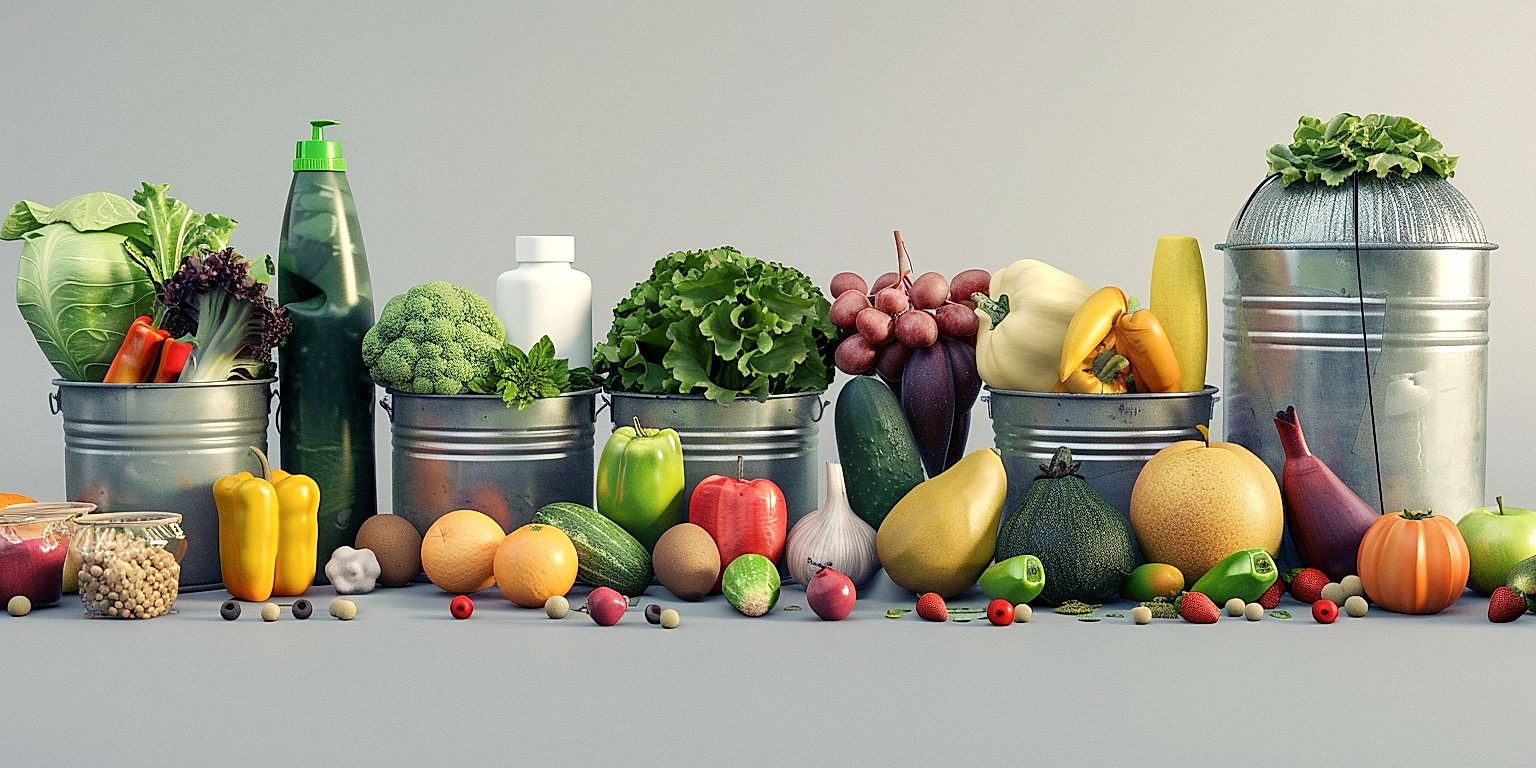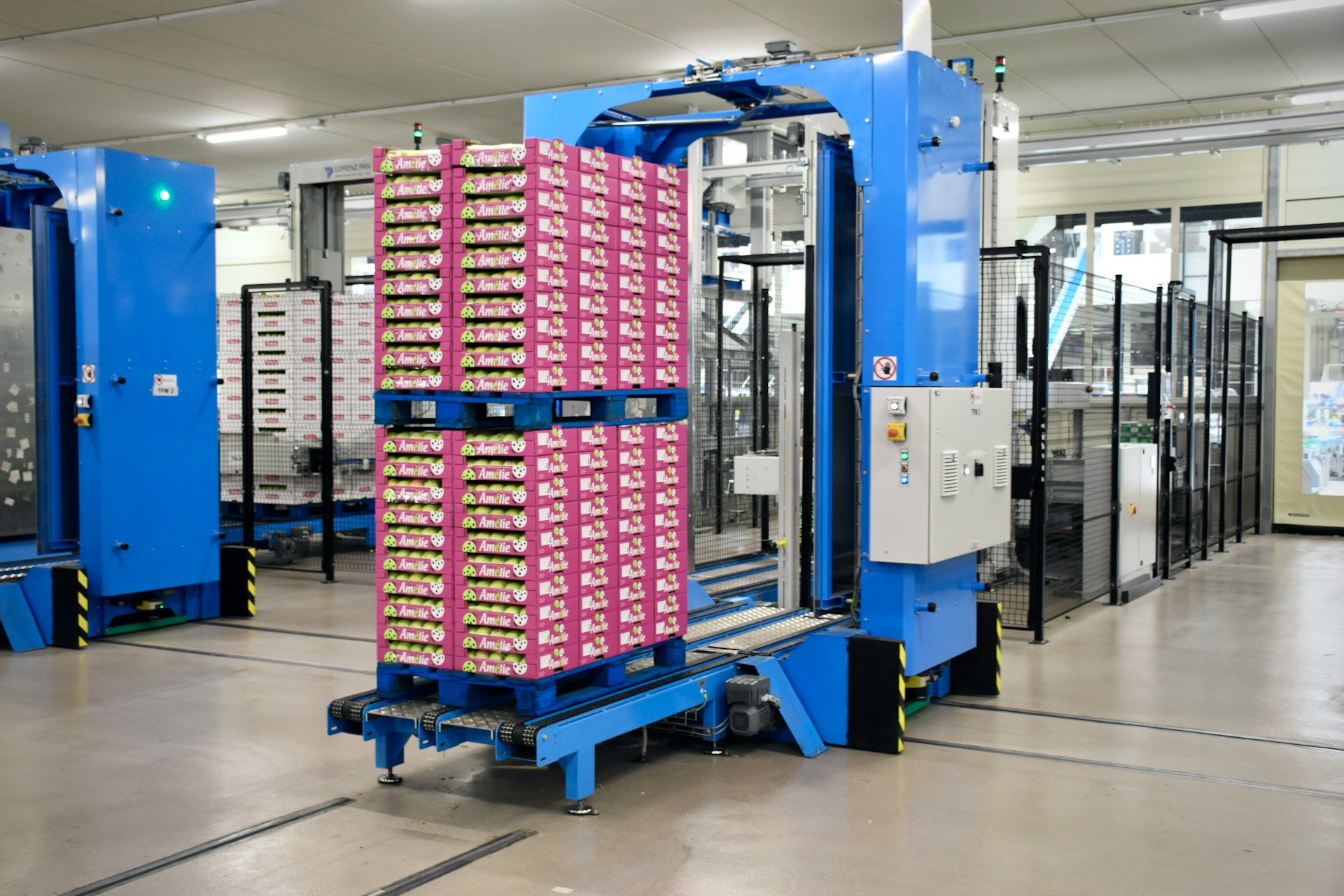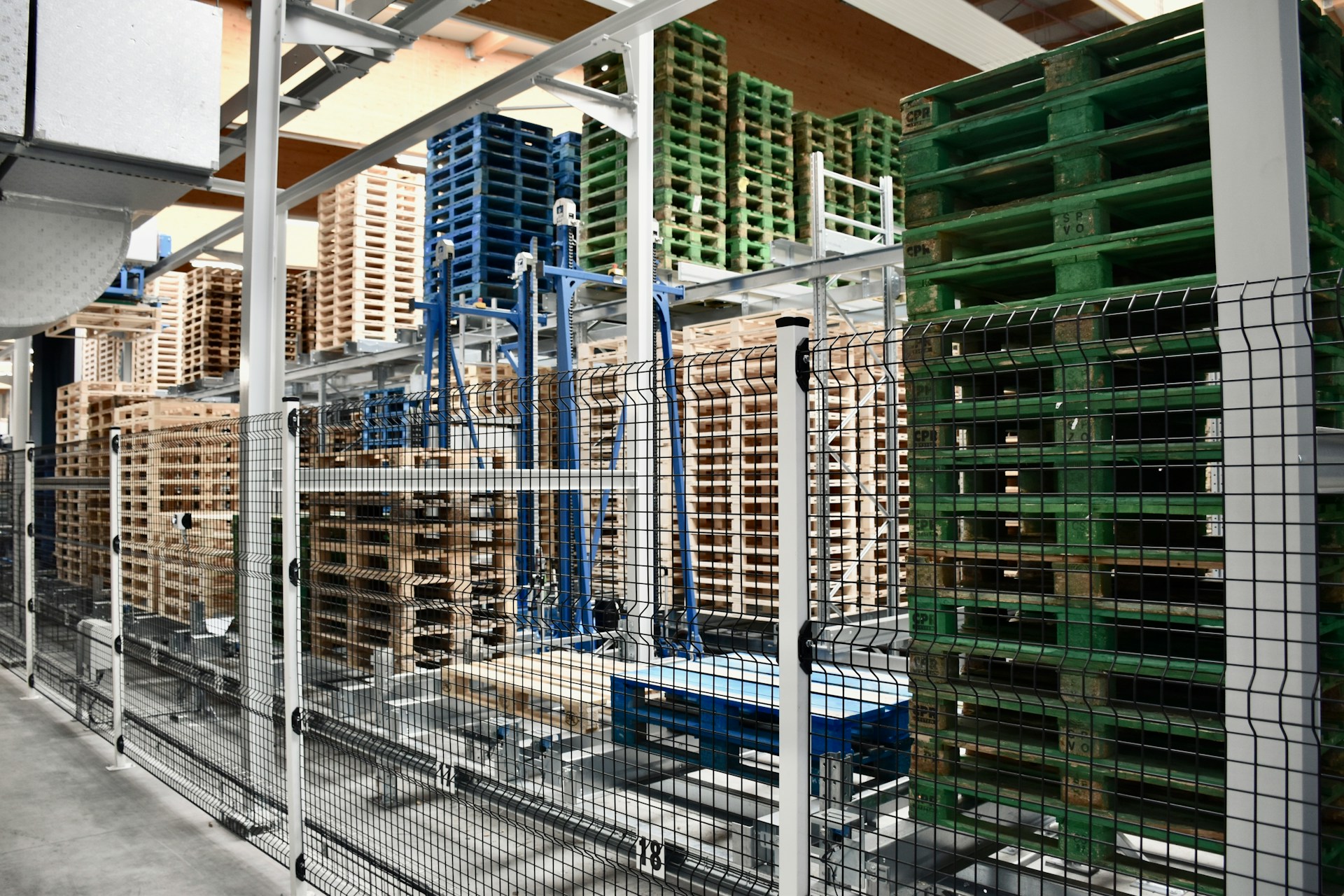A significant shift is occurring within the sphere of agricultural practices.
It’s not about increasing yield anymore; rather the focus is on decreasing waste.
Innovations in this sphere have seen promising developments, aimed primarily at minimizing waste and subsequently increasing sustainability.
From farm to fork, improving the efficiency in produce processing has become a significant concern for modern agribusiness.
This is leading to the emergence of numerous cutting-edge solutions.
Let us delve into the world of such practical innovations.
Contents
Innovations Reducing Waste In Produce Processing
1. Edible Coatings to Prolong Produce Shelf-life
In today’s world, finding sustainable ways to minimize food waste has become a top priority.
One of the innovative solutions that has surfaced in recent years is the use of edible coatings to extend the shelf-life of fresh produce.
Edible coatings can be made from a wide range of natural substances including proteins, polysaccharides, and lipids offering producers a green alternative to conventional plastics.
This technology is primarily used as a barrier against moisture loss and oxygen influx, two common causes of food waste in produce.
Applying an edible coating not only significantly prolongs the shelf-life of the product but also maintains its quality.
Edible coatings can be infused with antimicrobials, antioxidants, or even flavorings to further enhance the product’s freshness and appeal.
This innovative approach opens up a new perspective in the way we manage the freshness and safety of our food.
Interestingly, although this technology is innovative, the concept has in fact been around for thousands of years.
Many fruits naturally produce a wax or other substances that coat their surfaces to protect them from decay and dehydration during their growth.
The modern versions of these coatings are made using foods-grade materials, making them safe for consumption.
The use of these edible coatings is particularly beneficial for prolonging the life of perishable produce like fruits and vegetables.
Various types of formulations can be used for different types of produce, taking into account the specific storage and shipping conditions they require.
The application of the coating can be done by immersion or spraying, and is effective at slowing down ripening and decay processes.
It is important to note, however, that edible coatings are not a one-size-fits-all solution.
Developing a suitable coating requires an understanding of the physiological characteristics of the particular produce and the storage conditions in which it will be kept.
Nonetheless, with the proper research and development, edible coatings have the potential to make a major contribution to reducing waste in produce processing.
Overall, with the use of innovative solutions like edible coatings, we are seeing the beginnings of a trend towards more sustainable food processing practices in the industry.
2. Bioenergy Production from Food Waste
One of the most innovative and eco-friendly solutions in reduce waste in produce processing is the conversion of food waste into bioenergy.
Countless tons of fruits and vegetables deemed unfit for human consumption are thrown away daily, contributing to an ever-increasing problem of waste disposal.
However, with recent advancements in technology, these tons of wasted produce can be turned into a valuable source of energy.
Turning food waste into bioenergy not only helps to reduce landfill waste but also provides a renewable source of energy.
Biogas digestion and biofuel conversion are two main ways in which food waste can be converted into energy.
Food waste thrown into a biogas digester undergoes a process of anaerobic digestion, where microbial activity breaks it down, producing biogas as a result.
This biogas mainly comprises of methane, which is a potent greenhouse gas, but when captured and used as energy, reduces its harmful impact on the environment.
Not every aspect of biogas production is used for energy purposes, but the left-behind residue, a nutrient-rich digestate, can be used as a high-quality fertilizer, thus promoting a full-circle resource use.
It is not only commercial digesters that can work with this technology, but also small-scale home units can be employed at an individual level, turning domestic food waste into energy and fertilizer.
On the other hand, biofuel conversion works a bit differently, focusing primarily on transforming waste into liquid fuels like biodiesel or bioethanol.
Fats, oils, and sugars present in most fruits and vegetables are evidently the best source for biofuel production, thus turning waste into a powerful and clean energy source.
Moreover, the technology is currently refined to make the process more efficient and feasible on a large scale, ensuring the optimal utilization of nutritional value found in food waste.
Nonetheless, it is of crucial importance that the shift towards bioenergy solutions is done responsibly, ensuring the energy yield does not infringe on the food supply or cause environmental harm due to mismanagement of the conversion processes.
Overall, the focus on turning food waste into bioenergy presents a promising way of tackling issues of food waste, energy shortage, and environmental degradation, all of which have become pressing matters on a global scale.
3. Zero-waste packaging in produce shipment.
One of the most significant ways to combat waste in the produce processing industry is through the utilization of zero-waste packaging during produce shipment.
As our world becomes increasingly aware of the detrimental effect waste has on our environment, leaders in the industry are exploring viable options to cut back on waste.
Innovation in packaging is at the forefront of this movement, with the main goal being to use packaging that can be entirely recycled or composted, therefore leaving no waste behind.
There is a paramount emphasis in the produce sector on developing sustainable packaging options that still maintain the necessary requirements for transportation and consumer appeal.
Major produce companies worldwide have started to adopt zero-waste packaging strategies, overhauling their packing processes to ensure that all materials used are either recyclable or compostable.
This is a much-needed shift from traditional packaging materials, like plastic and Styrofoam, which are notoriously harmful to the environment.
Not only do these companies recognize the environmental benefits of zero-waste packaging, but they also see the positive impact it has on their brand image in the eyes of the consumer.
Today’s consumers are more environmentally conscious than ever before and favor brands that demonstrate a commitment to sustainability.
One of the key challenges in this transition to zero-waste packaging is ensuring that the package integrity and function are not compromised.
The packaging still needs to protect the produce during shipment, maintain freshness, and present well to the consumer.
Some of the more innovative solutions being used include biodegradable materials and plant-based plastics.
It’s clear that transitioning to zero-waste packaging is not without its obstacles, but the initial success stories are encouraging other producers to adopt similar strategies.
It’s important to note that the use of zero-waste packaging is only one of various sustainable initiatives being implemented by these companies.
Others include broader efforts towards reducing carbon footprints, implementing sustainable farming practices, and reducing water usage, all of which contribute to a more sustainable, waste-free produce industry.
The movement towards zero-waste packaging in produce shipment is a significant step forward in reducing waste in the produce industry and showcases the power of innovation in sparking positive change.
4. Precision farming technology for optimal harvesting
The era of traditional farming is being swiftly replaced by precision farming technology in the bid to improve operational efficiency and reduce waste in produce processing.
By employing a variety of technological tools such as drones, robotics, GPS, and satellite imagery, this innovative method minimizes resource waste, increases yield, and ensures an optimal harvesting process.
Precision farming technology, driven by innovation, plays a pivotal role in ensuring less wastage and elevating the processing of produce farming.
This high-tech approach to farming facilitates regular monitoring of crops, ensuring necessary measures are implemented at the right time to safeguard the health of the crops, improving yield quality, and consequently reducing waste.
Ensuring that accurate irrigation and nutrient supply is delivered at the right time and in precise proportions are part of the key strategies employed in precision farming.
This eradicates the chances of overwatering or over-fertilizing the crops which not only saves water and reduces chemical use but also prevents produce wastage due to damage.
Harvesting is one of the critical stages where a significant amount of waste can be produced if not managed effectively.
Precision farming offers an efficient solution by utilizing machinery equipped with cutting-edge technology, which harvests accurately, leaving minimal crops behind and ensuring optimal harvesting.
In addition, this approach allows for the automation of farming activities, freeing up resources and minimizing the chances of human errors, which often lead to wastage in the farm-to-fork pipeline.
One significant advantage with precision farming is its focus on data collection and analysis, which is pivotal to avoiding inefficiencies and predicting outcomes.
<p<Precision farming technologies gather real-time data on climate conditions, soil quality, crop health and growth rates, allowing farmers to make informed decisions which maximizes output and minimizes waste.Technology advances in machine learning and artificial intelligence further enhance predictive models in precision farming, recommending optimized sowing periods and harvesting times to ensure the highest quality of produce while reducing potential wastage.
This tech-driven farming technique significantly contributes to the reduction of greenhouse gas emissions and promotes sustainable farming, all while minimizing waste and amplifying yield.
It is apparent that precision farming not only optimizes the harvesting process but also equips farmers with the tools necessary to make the entire crop cultivation process more efficient and less wasteful.
Overall, precision farming technology lies at the heart of the technological innovations reducing waste in produce farming – from sowing to harvesting, and beyond.
5. Food waste recycling into compost fertilizers
In the bid to reduce waste in produce processing, food waste recycling into compost fertilizers has emerged as a significant innovation.
This method not only segues from our traditional waste disposal system, but it also turns detritus into a beneficial resource.
Millions of tons of food are discarded yearly, exhibiting a tremendous potential for composting.
Food waste, containing significant amounts of organic materials, is capable of being transformed into nutrient-rich compost.
By recycling food waste into compost fertilizers, we can cut down on greenhouse gas emissions while enriching the soil.
Additionally, recycling food waste into compost fertilizer helps in reducing the necessity of chemical fertilizers, which can harm the ecosystem due to overuse.
It is an environmentally friendly approach that preserves natural resources, mitigating the ecological impact of produce processing.
Restaurant owners, farmers, and even homeowners are beginning to grasp the importance of composting, leading to a rising trend in food waste recycling.
Technology for composting has considerably improved, offering easier and more efficient composting systems.
These new technologies include aerobic composters and vermicomposting systems that speed up the composting process.
However, despite the advantages of food waste recycling, many still find it challenging to practice on a large scale.
Challenges include the separation of food waste from other waste streams, transportation, and adequate facilities for composting.
Nevertheless, with proper regulations, policies, and public awareness in place, food waste recycling can be adopted more extensively.
Reaping the benefits of food waste recycling will require collective participation from various sectors, but the result will be a significant reduction in waste and a healthier planet.
Therefore, food waste recycling warrants further exploration and development in the pursuit of reducing waste in produce processing.
The Bottom Line
Without a shadow of doubt, advances in food technology have provided us with several innovative solutions to extend the shelf-life of our produce, enabling suppliers to deliver fresher and healthier servings.
Through turning food waste into bioenergy, we have discovered a sustainable way to generate power and reduce landfill waste.
The introduction of zero-waste packaging during shipment is now minimizing the environmental impact, supporting the global initiative towards a cleaner and greener Earth.
Furthermore, precision farming technology has revolutionized the agriculture sector, enabling more efficient and optimal harvesting.
Lastly, by recycling food waste into compost fertilizers, we are reducing waste and nurturing our soils simultaneously.
That being said, it is clear that food technology has a significant role in not just counteracting food waste but also in contributing to environmental sustainability.




